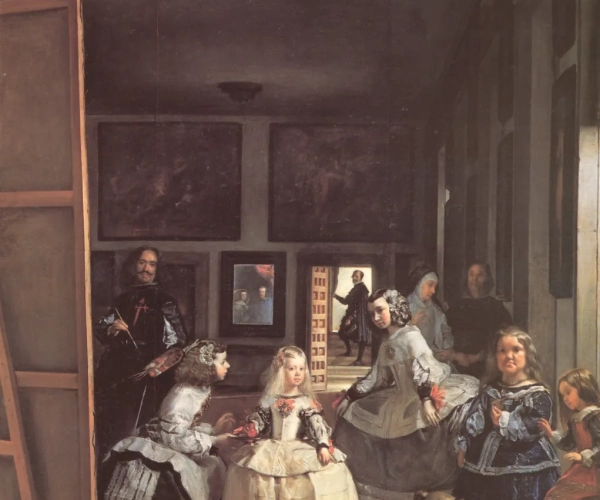Las Meninas
Las Meninas, painted by Diego Rodríguez de Silva y Velázquez in 1656, is a masterpiece that continues to captivate viewers with its enigmatic composition and masterful handling of light and space. Velázquez, as court painter to King Philip IV of Spain, was a master of capturing the essence of his subjects, and this painting is a testament to his unparalleled skill and artistic vision.
At first glance, the painting appears to depict a scene from the Spanish royal court, with the princess, Infanta Margarita, accompanied by her ladies-in-waiting, the maids of honor ('meninas' in Spanish), and various courtiers. However, the painting defies traditional portraiture by incorporating a self-referential element, as Velázquez himself is visible in the act of painting the scene, standing at his easel and regarding the viewer with a direct gaze. This blurring of the boundaries between reality and artifice, between the painter and the painted, invites us to question the nature of representation and the role of the artist in creating and shaping our perceptions of the world.
What sets Las Meninas apart is its complex spatial arrangement and the play of light and shadow, which create a sense of depth and ambiguity within the composition. The use of mirrors and reflections further adds to the intrigue, as they suggest multiple viewpoints and realities within the same space. This manipulation of space and perspective challenges the viewer to reconsider their own position in relation to the artwork and the figures within it.
Velázquez's mastery is evident in his ability to render each figure with remarkable detail and psychological depth, capturing fleeting expressions and gestures that hint at underlying emotions and relationships. The interplay of gazes and the psychological tension between the figures contribute to the sense of drama and intrigue that permeates the painting.
Las Meninas stands as a timeless testament to Velázquez's artistic genius, inviting viewers to contemplate the nature of representation, the relationship between artist and subject, and the complexities of perception and reality. Its enduring appeal lies in its ability to elicit continued fascination and interpretation, making it a landmark in the history of art.







No Comments Yet...